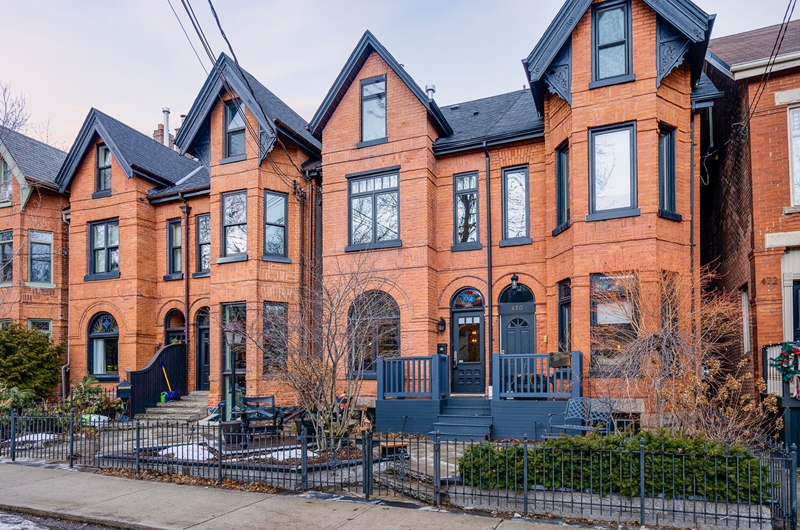We know Cabbagetown today as a beautiful, culturally rich neighbourhood full of history and Victorian homes. Habitants come from several different backgrounds but they all share pride in their neighbourhood and a strong sense of community.
Located in central Toronto, Cabbagetown-South St. Jamestown is home to the semi-detached Victorian style house and is known as one of the largest areas in North America to preserve these Victorian homes. I’m Danielle Demerino, a Toronto real estate agent and I love learning and sharing the history of our hoods. If you are new to Toronto and would like some guidance, check out my best neighbourhoods section. So, where did the name Cabbagetown come from? Let’s get to it!
Believe it or not, the history of “Cabbagetown” began in the late 1840s when Irish immigrant workers fled the famine of their motherland and settled in Toronto to make a better life for themselves. Residents were said to have been so poor, they used their front yard to grow cabbage and other vegetables to survive; the well-to-do British residents found this offensive. By the end of the 1800s, Cabbagetown was absorbed by the city. It was home to the Irish working class who found themselves working in the south of Corktown. It grew into an immigration destination for the Polish, Irish and Macedonian’s.
Before the 1940s, this area was full of farmlands, vegetables and cottages and known as the village of Don Vale outside of Toronto. As the years passed in the 1840s, the area grew up. The Winchester Street Bridge (before the Prince Edward Viaduct bridge was built, this was the main northern crossing point over the Don River) catered to travellers as places like the Don Vale Tavern and Fox’s Inn were established.
In the late nineteenth/early twentieth century, Cabbagetown peaked. The majority of homes were built in the 1880’s. The impact suffered on the area and its population after the first World War was devastating. Employment was hard to come by and hard times were faced by many. Several people were separated from their families, homes were divided into sub-apartments and rooming houses. The slums of Cabbagetown were quickly growing with no light at the end of the tunnel.
Landlords didn’t see the value in the neighbourhood and deterioration of these once beautiful homes began, as landlords saw little to no value in maintaining their investments. The development of housing projects began, so did the ethnic diversity and the north was to be cleared and filled with low-income housing to accommodate.
Throughout the 60’s, developers were snatching up property to build high rise housing when Mayor David Crombie enforced a building height by-law which forced builders to sell their purchases. This created a huge stock of low priced, Victorian houses that were found and bought by Toronto real estate agents and renovators who found the prices to be right. The gentrification process slowly began and the restoration of Cabbagetown’s historic homes eventually lead to what are now considered to be high demand residences of Toronto!
For more information about Cabbagetown or other Toronto neighbourhoods, feel free to give us a call!
Danielle Demerino
ddemerino@royallepage.ca
416-728-5401
Brittany Huggins
bhuggins@royallepage.ca
647-863-7234





